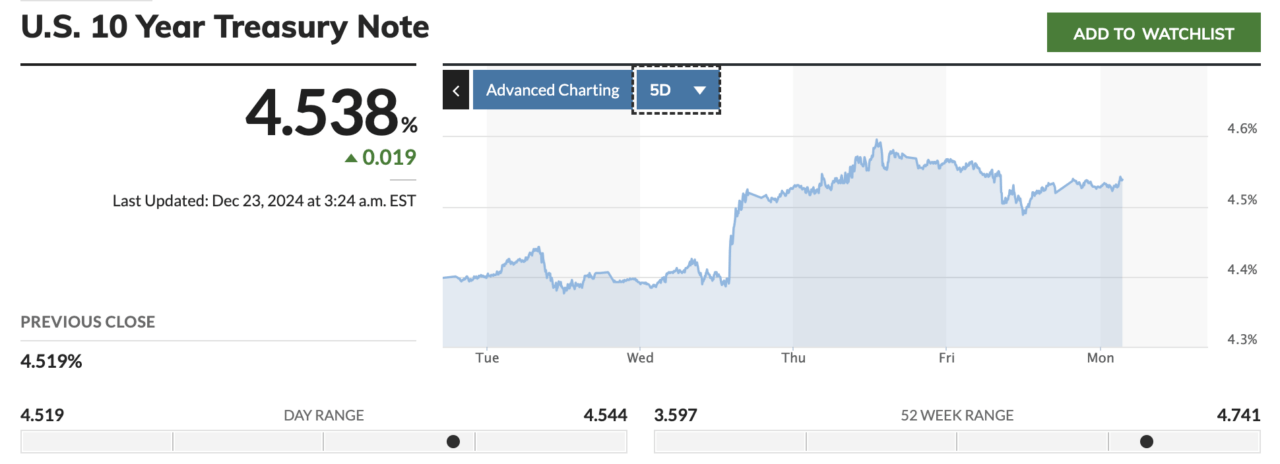On December 23, pseudonymous analyst Marty Marty shared an analysis of the U.S. Dollar Index (DXY), highlighting its potential impact on financial markets, including cryptocurrencies.
The DXY, which measures the strength of the U.S. dollar against a basket of major currencies, currently stands at 107.84. This marks a significant recovery from its year-to-date low of around 100 in July and reflects a trend of dollar strengthening.

The dollar’s strengthening aligns closely with major events, including Donald Trump’s victory in the November 2024 U.S. presidential election. His America-first agenda, which prioritizes domestic growth through policies such as extending tax cuts, potential trade tariffs, and infrastructure spending, has heightened market anticipation of expansive fiscal measures. These proposals could increase government borrowing and inflationary pressures, leading to higher interest rates and further strengthening the dollar. This outlook has boosted the DXY as investors seek the relative safety and stability of the world’s reserve currency.
Adding to the complex dynamics, the Federal Reserve announced a 0.25 percentage point rate cut on December 18, reducing its target range to 4.25%–4.50%. Typically, rate cuts lead to lower bond yields, as borrowing costs fall and markets price in easier monetary conditions. However, in this case, the yield on the 10-year Treasury Note has risen to 4.54% since the Fed’s decision.

This seemingly counterintuitive move can be explained by the hawkish tone of the Federal Open Market Committee (FOMC) press conference.
Fed officials signaled that the pace of rate cuts would slow in 2025 due to persistent inflation concerns, suggesting a prolonged period of tighter monetary conditions than markets had initially expected. This stance has pushed yields higher as bond investors demand more compensation for holding longer-term debt in an inflationary environment.
The interplay between these factors—fiscal policy, monetary signals, and inflation expectations—has significant implications for asset prices. A rising DXY typically exerts downward pressure on risk assets, including cryptocurrencies. This happens because a stronger dollar reduces global liquidity, increasing the opportunity cost of holding speculative investments like Bitcoin and Ethereum. Commodities, such as gold and oil, also tend to face downward pressure when the dollar strengthens, as they become more expensive for buyers using other currencies, often leading to reduced demand.
However, this relationship is not absolute. Certain assets can perform well during periods of dollar strength. For instance, U.S. Treasury bonds, while initially affected by rising yields, often attract global investors seeking safe-haven assets. Defensive sectors in the stock market, such as healthcare and utilities, may also show resilience. Even gold, which usually moves inversely to the dollar, can rise during periods of extreme uncertainty, as both gold and the dollar are considered safe havens.
The broader macroeconomic environment underscores the interconnectedness of global markets. Cryptocurrencies, often viewed as independent from traditional financial systems, are deeply influenced by changes in liquidity, interest rates, and risk sentiment. If the DXY continues to strengthen, cryptocurrencies may face headwinds as investors reduce exposure to higher-risk assets. Conversely, a weakening dollar could create a more favorable environment for Bitcoin, Ethereum, and other digital assets by improving global liquidity and reigniting investor risk appetite.
Featured Image via Pixabay









